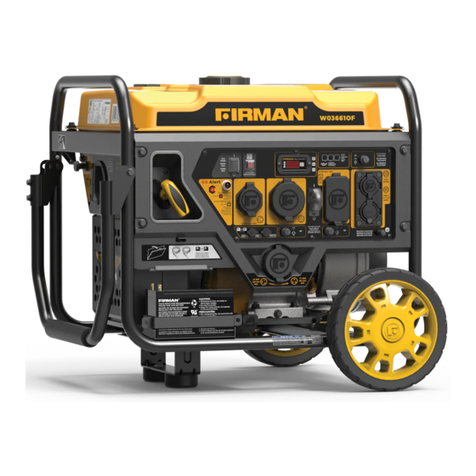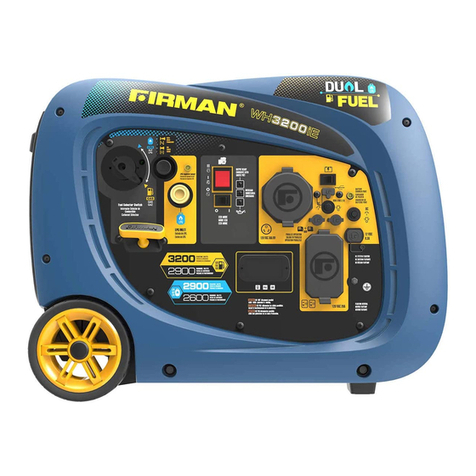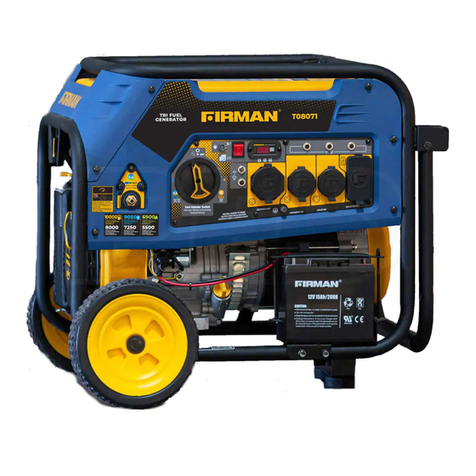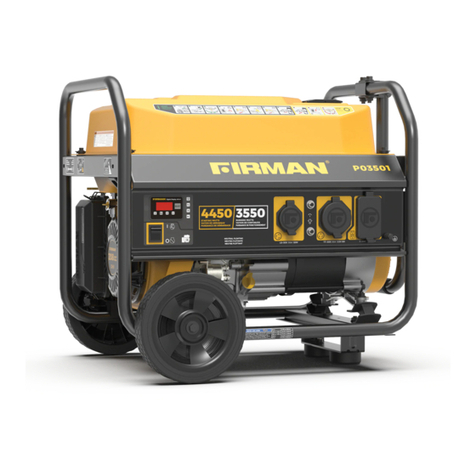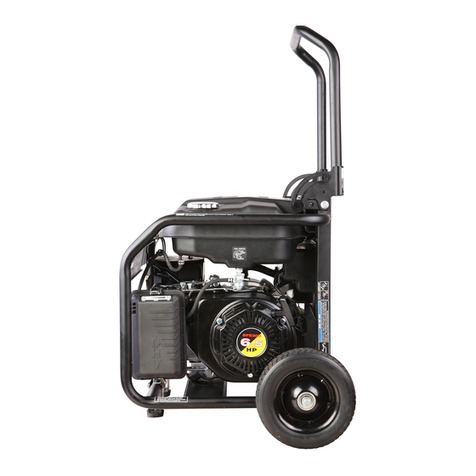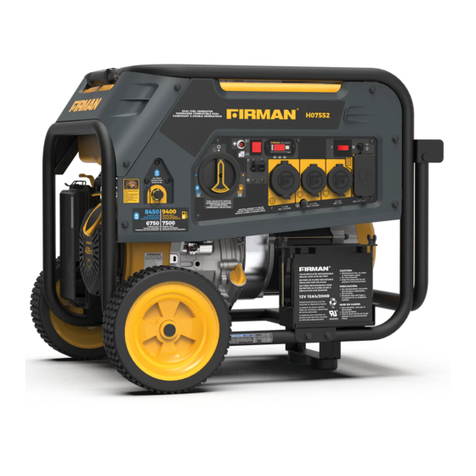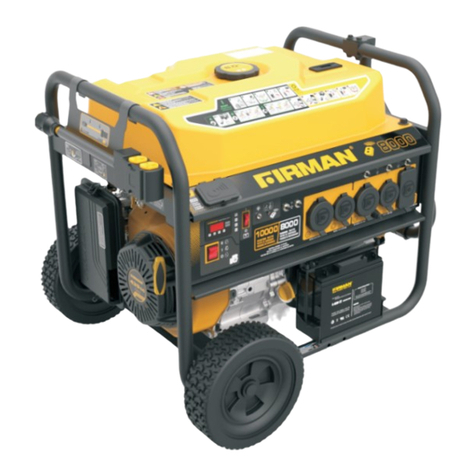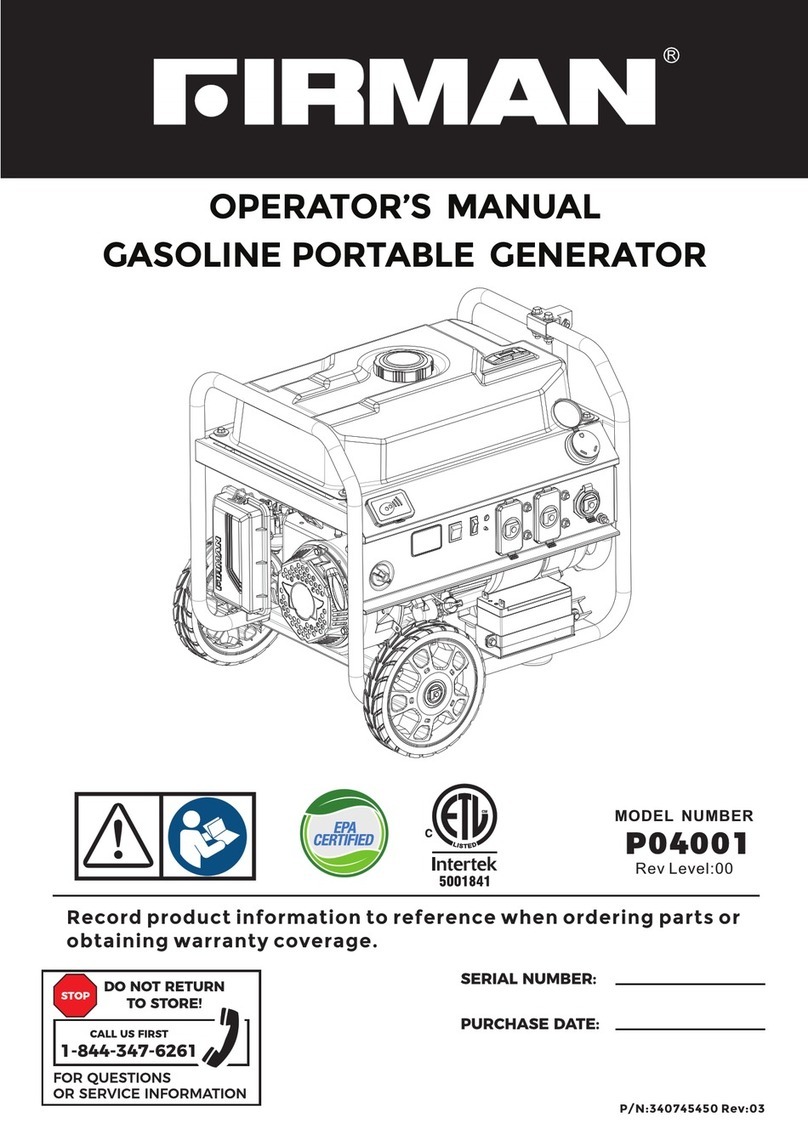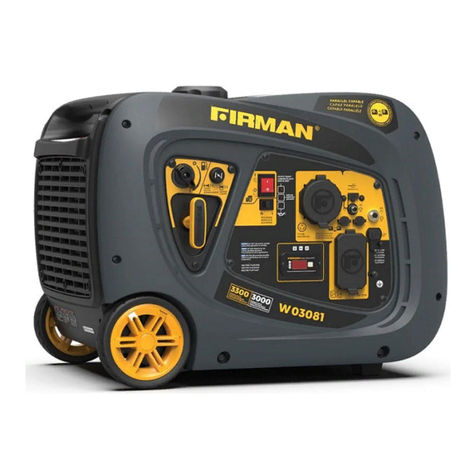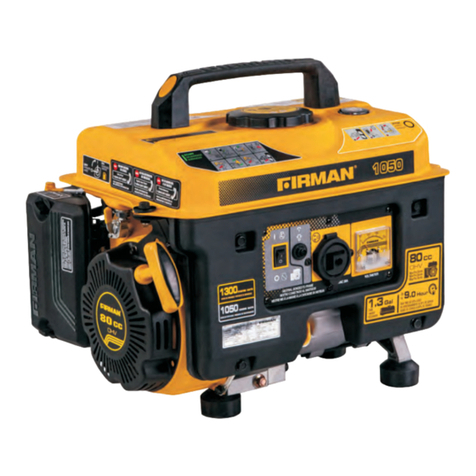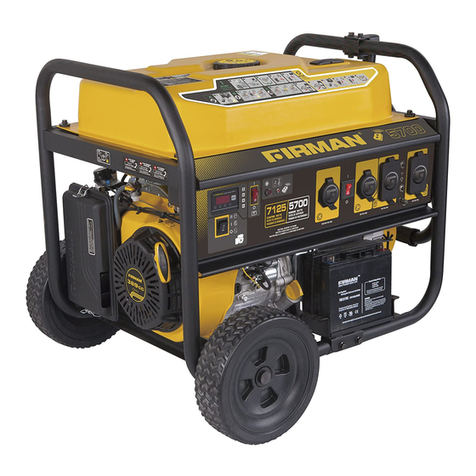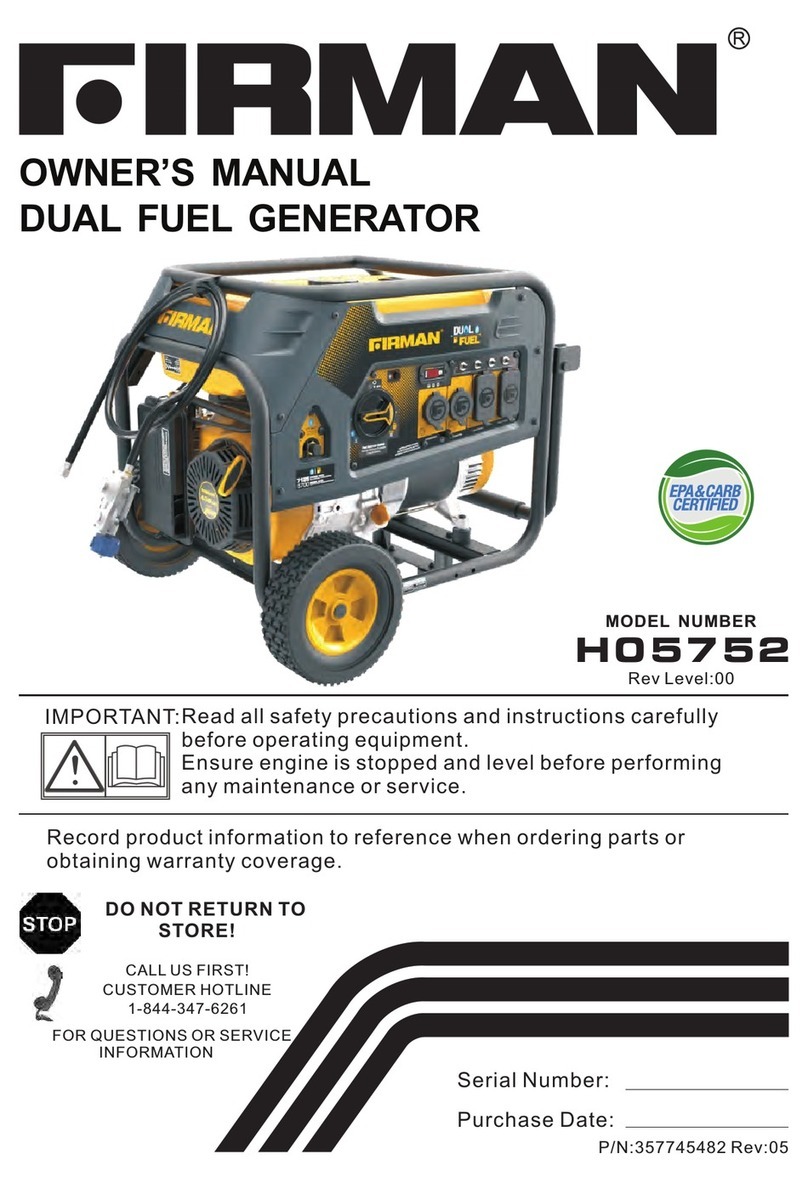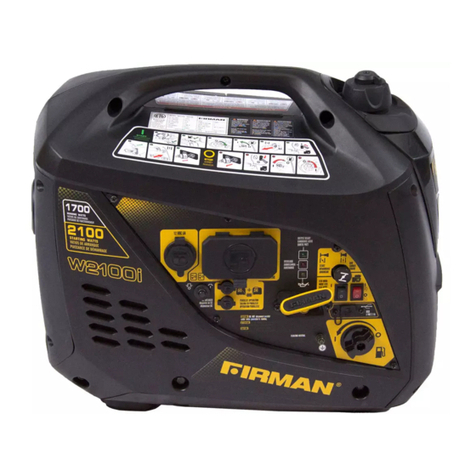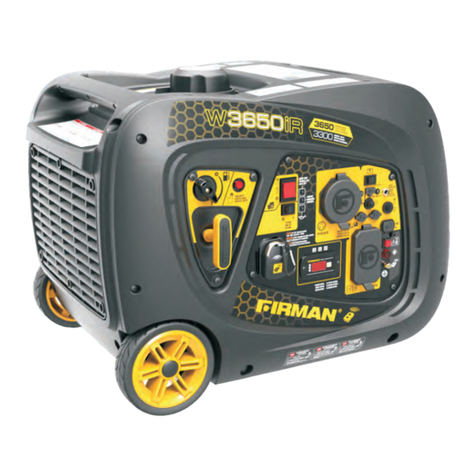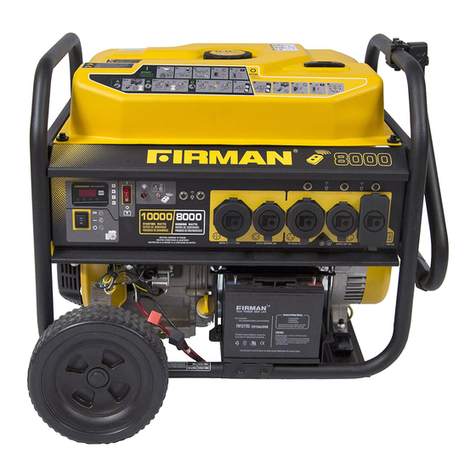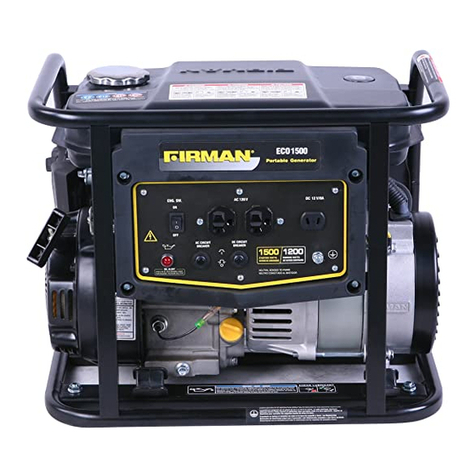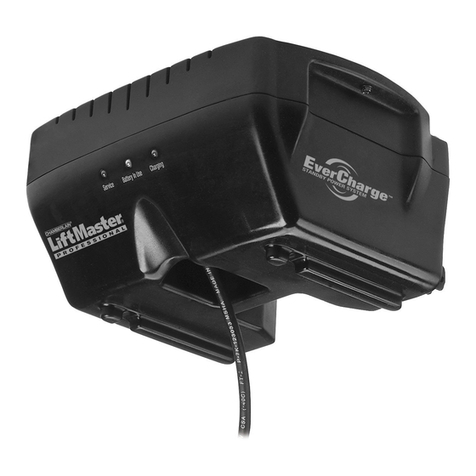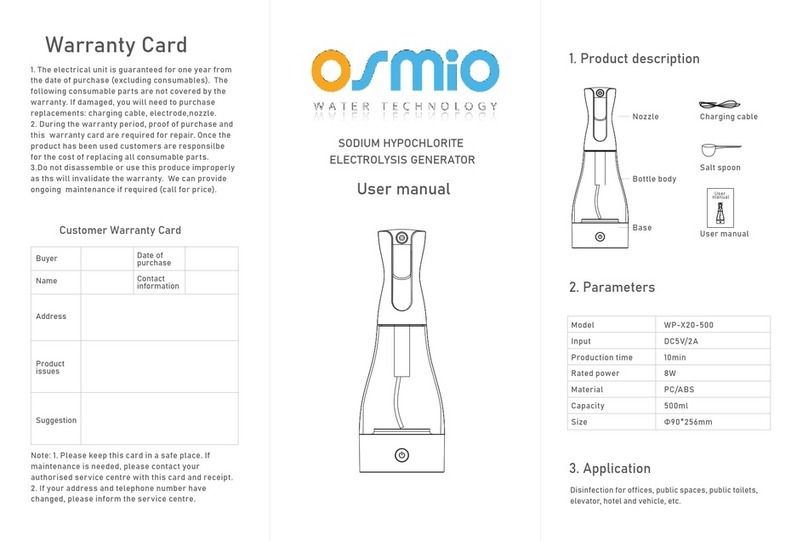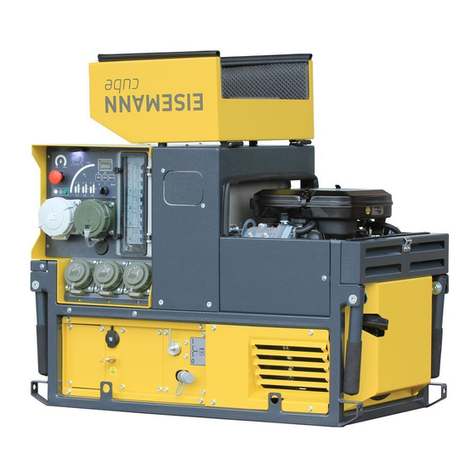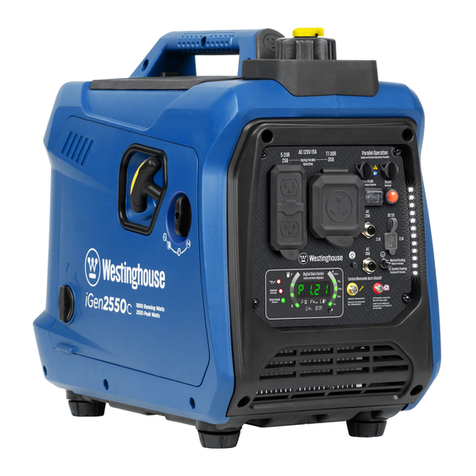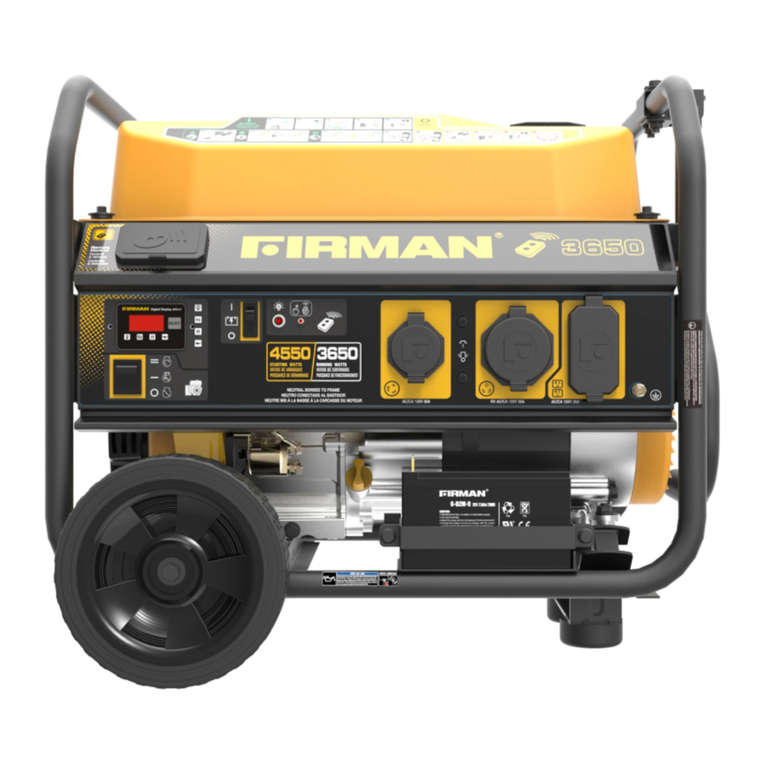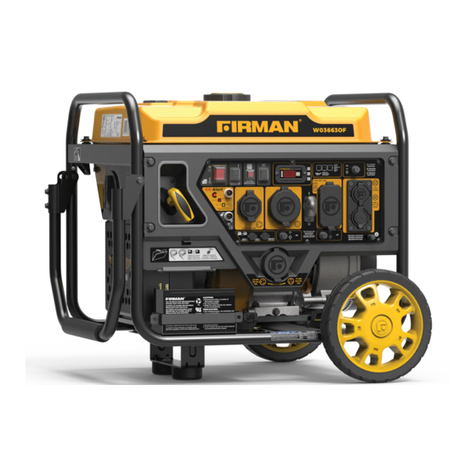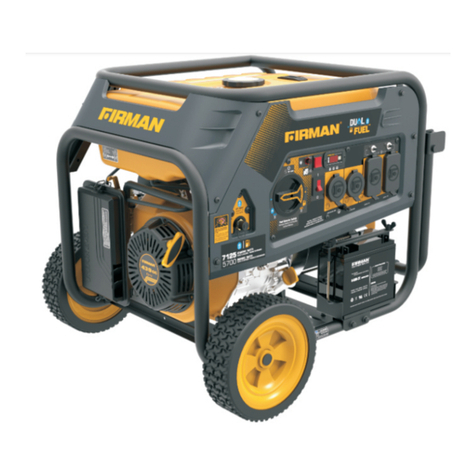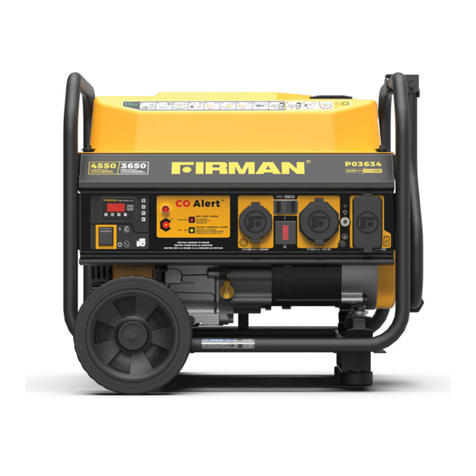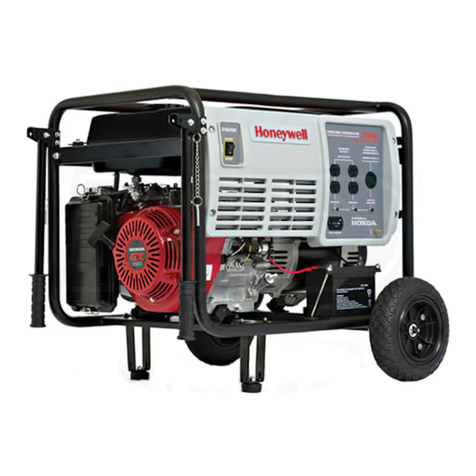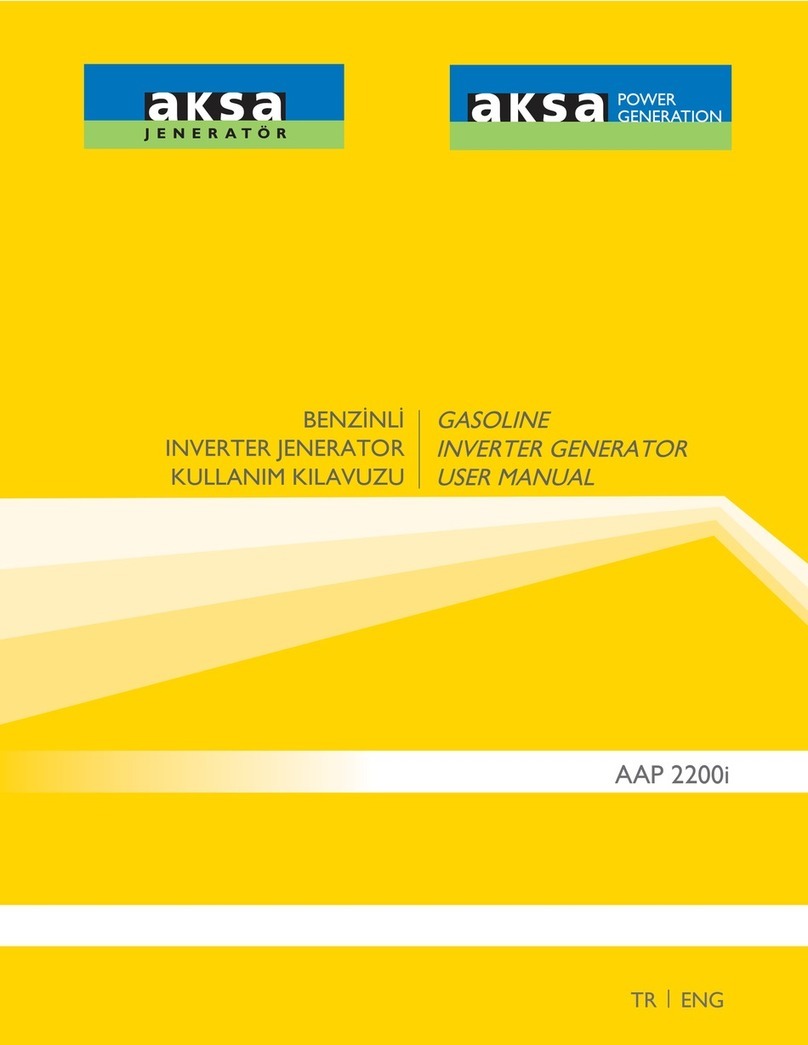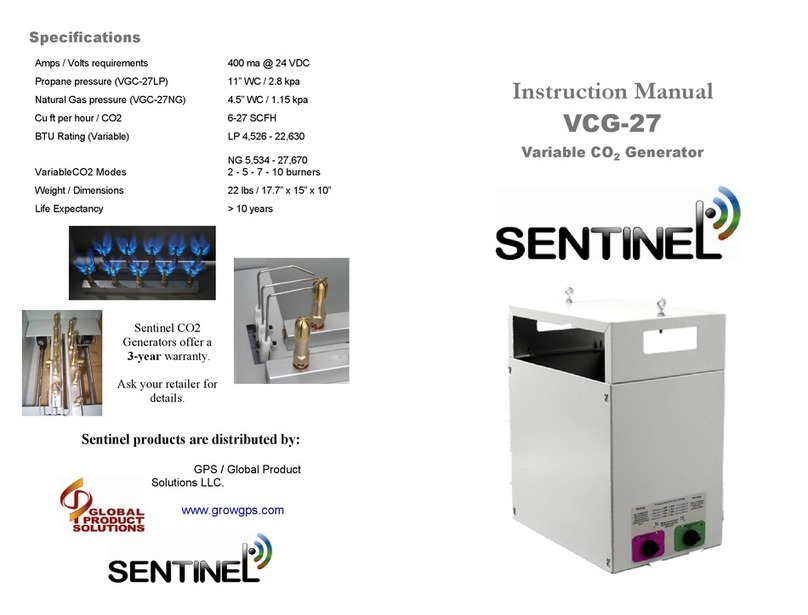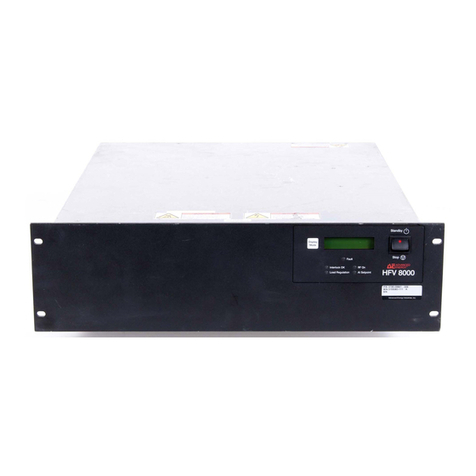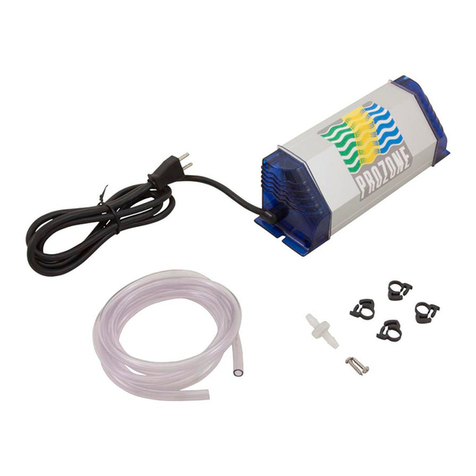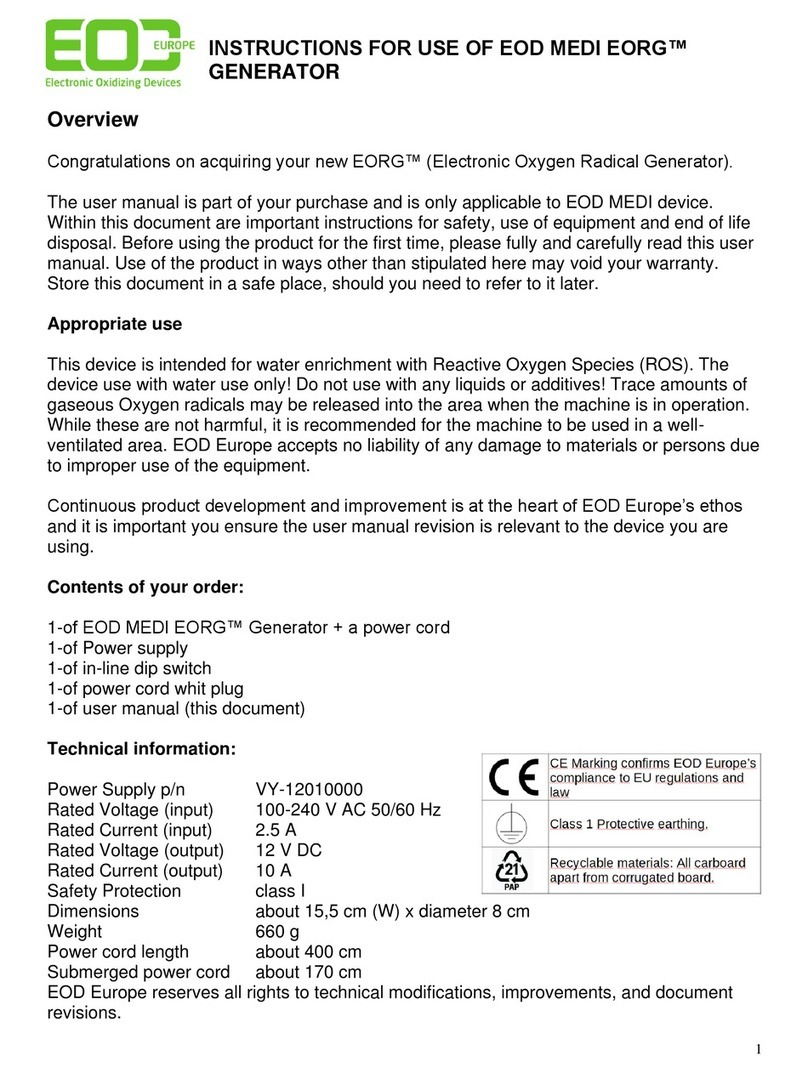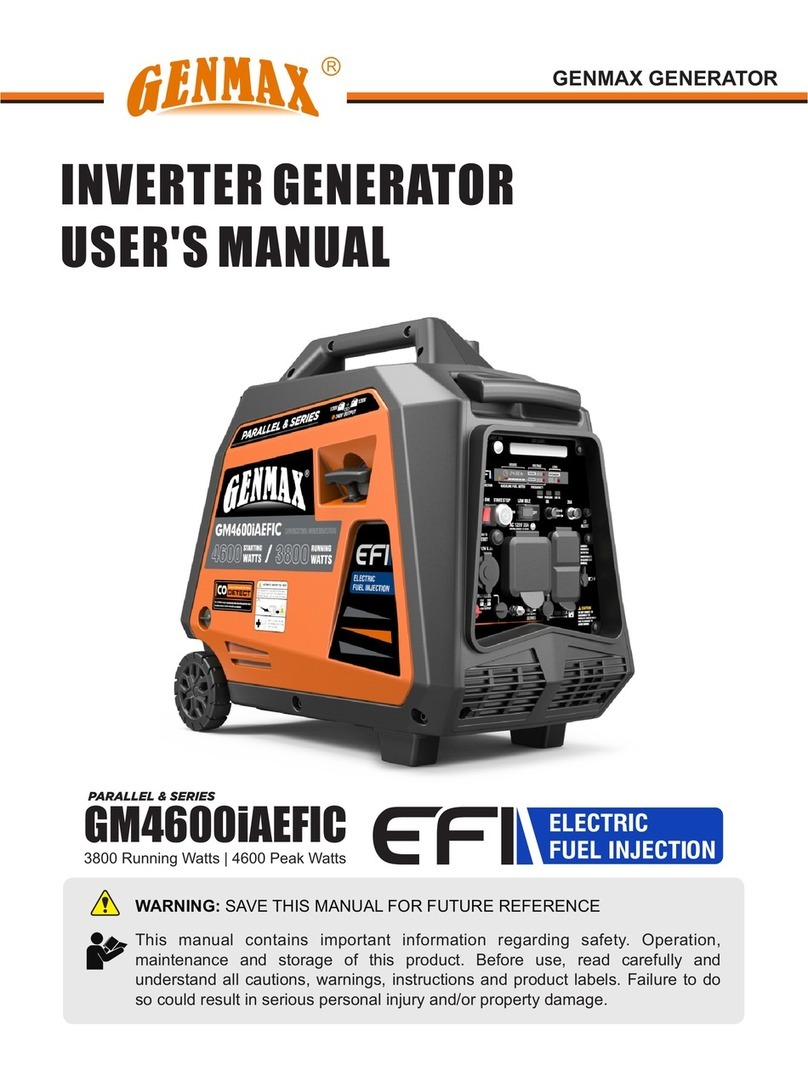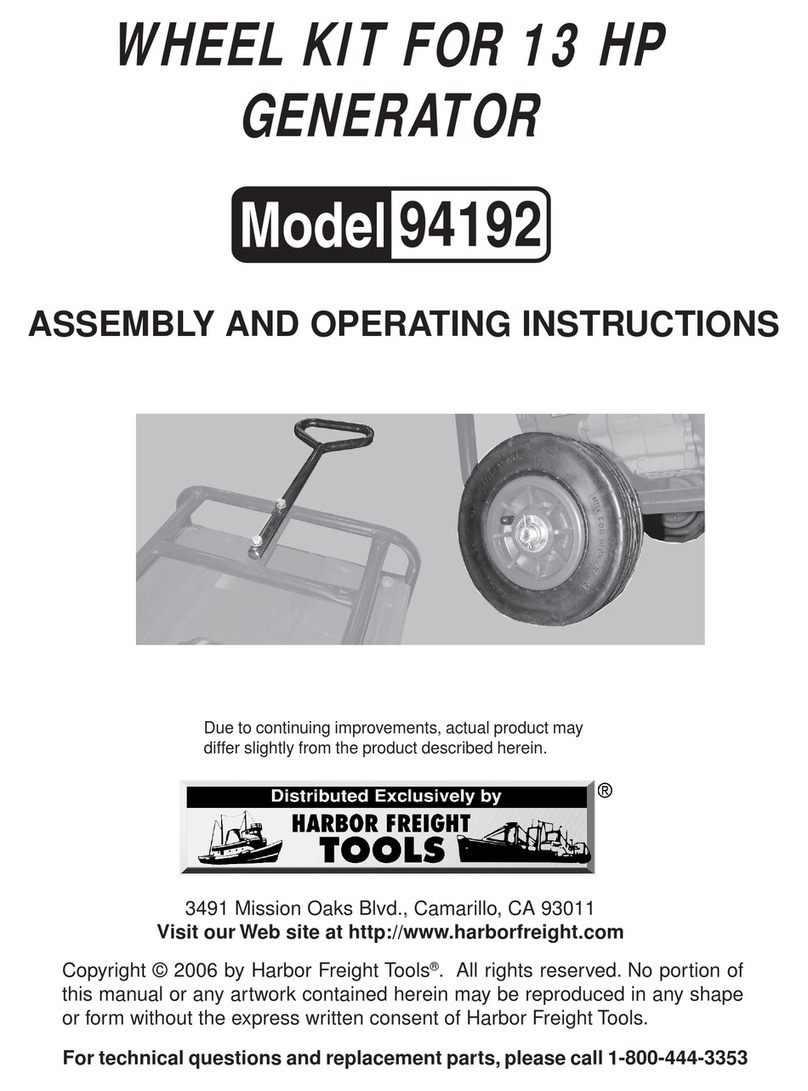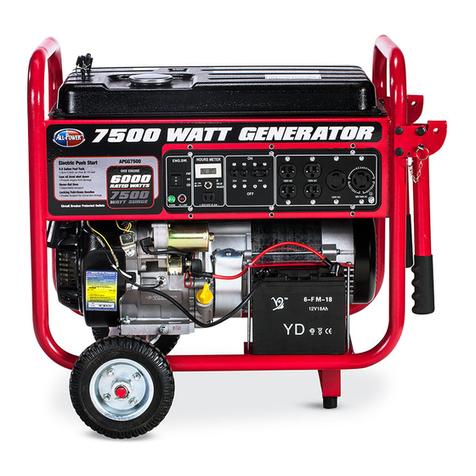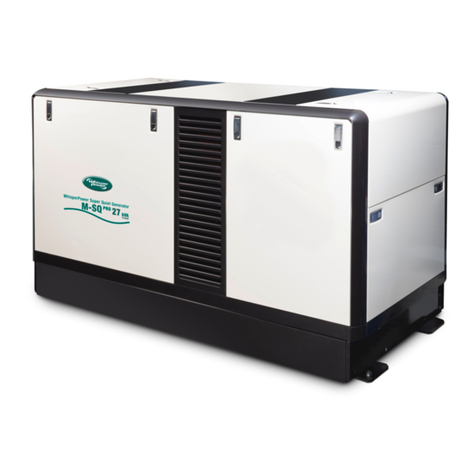
&. CAUTION
• LPG under pressure is highly flammable and
can cause a fire or explosion if ignited.
• LPGisheavierthan airand canaccumulateinconfined
spacesand low placesinthe eventof a leak.
• LPG has a distinctive odor to help detect
potential leaks.
• Do not allow children to tamper or play with
the LPGcylinder.
• In the event of an LPG fire, flames should not
be extinguished unless by doing so the fuel
supply valve can be turned off. If the fire is
extinguished and a supply of fuel is not turned
off, an explosion hazard greater than the fire
hazard cou Id be created.
• Keep a fire extinguisher near the generator
all the time.
• Always keep the LPGcylinder in an upright
position.
• Do not subject LPGcylinder to excessive heat.
• Contact with liquid contents of the cylinder
will cause freeze burns to the skin.
• An LPG cylinder not connected for use shall
not be stored in the vicinity of the generator.
• When transporting and storing, turn off the
cylinder valve and fuel selector switch, and
disconnect the cylinder.
3-Permanent Connection to a large
Propane supply tank:
In the instance that you would need to connect
your generator to a large propane Supply tank,
larger than 20 or 30 lb DOT cylinder, it is
recommended to contact your Gas Equipment
Company. Various equipment for use with LPG,
is required for proper conformance to all NFPA
regulations. Your Gas Equipment Company can
help you select and install the proper regulator,
fittings and connections to meet all the Codes
and manufacturer regulations. Each installation
may be different and will required proper equipment.
Contact your Gas Equipment Company to assure
that you are meeting aII NFPA 58 (Liquefied
Petroleum Gas Code) and NFPA 54 (National Fuel
Gas)Codes.
Operational HighAllilude
At altitudes over 5,000 feet(l524 meters), a
minimum 85 octane/ 85 AKI (89 RON) gasoline
is acceptable.
The density of air at high altitude is lower
than at sea level. Engine power is reduced
as the air mass and air-fuel ratio decrease.
Engine power and generator output will be
reduced approximately 3.5% for every 1000 feet
of elevation above sea level. This is a
natural trend and cannot be changed by
adjusting the engine. At high altitudes
increased exhaust emissions can also result
due to the increased enrichment of the air
fuel ratio.
Other high altitude issues can include hard
starting, increased fuel consumption and
spark plug fouling. To alleviate high
altitude issues other than the natural
power loss, FIRMAN can provide a high
aIt it ude ca rb ureto r main jet. The aItern at ive
main jet and installation instructions can be
obtained by contacting Customer Support.
Installation instructions are also available in the
Technical Bulletin area of the FIRMAN internet site.
The part number and recommended minimum
altitude for the application of the high
altitude carburetor main jet is listed in the
table below.
171cc Altitude
Altitude main jet 1 330717004 3000-6000Feet
Altitude mainjet2 330717005 6000-8000Feel
&. WARNING
Operation using the alternative mainjet at
elevations lower than the recommended
minimum altitude can damage the engine.
For operation at lower elevations, the
standard mainjet must be used. Operating
the engine with the wrong engine
configuration at a given altitude may
increase its emissions and decrease fuel
efficiency and performance.
English Page16 Customer Service 1-844-FIRMAN1




















